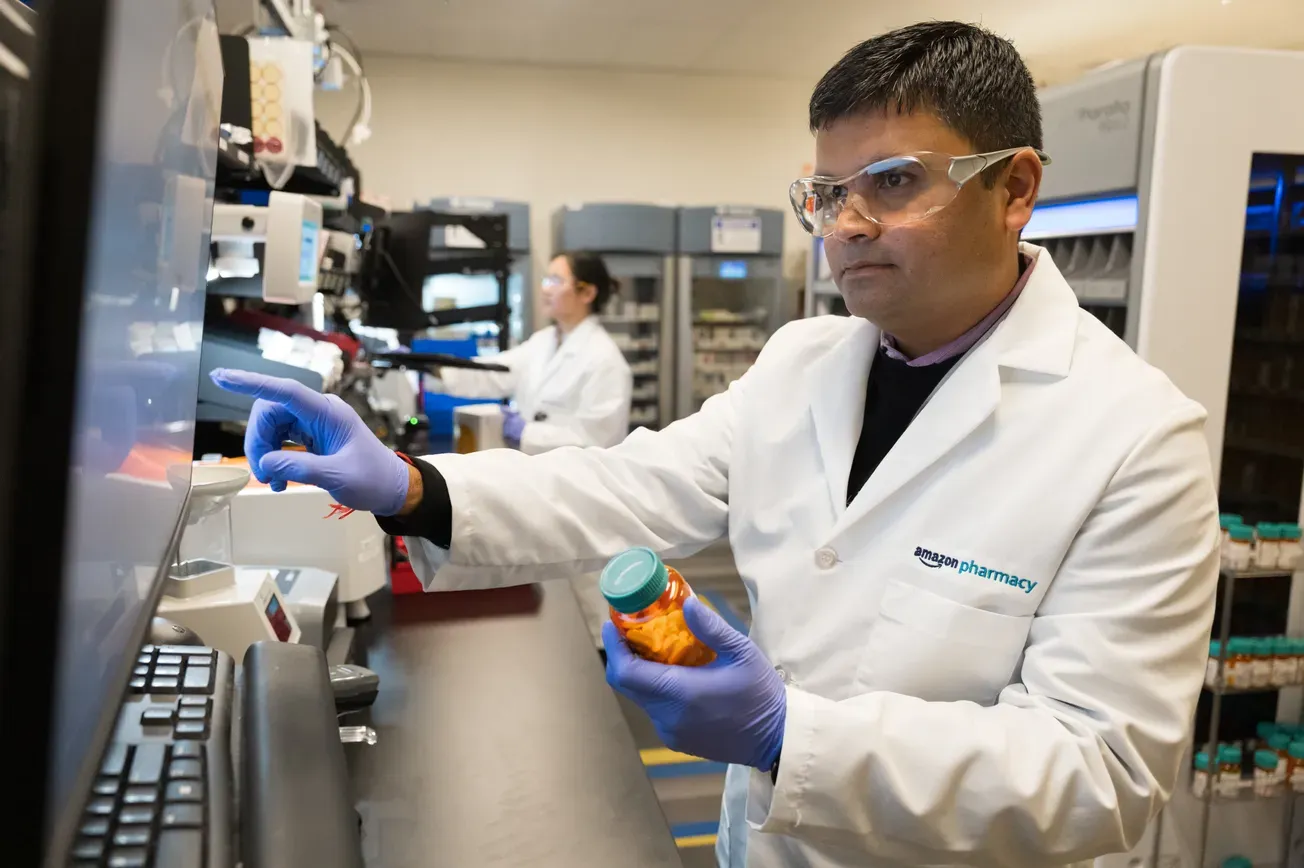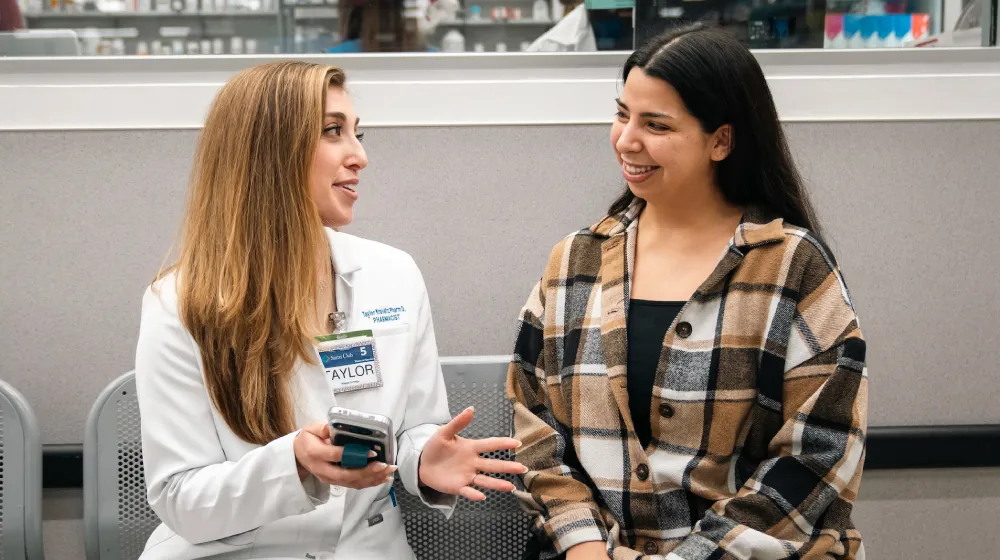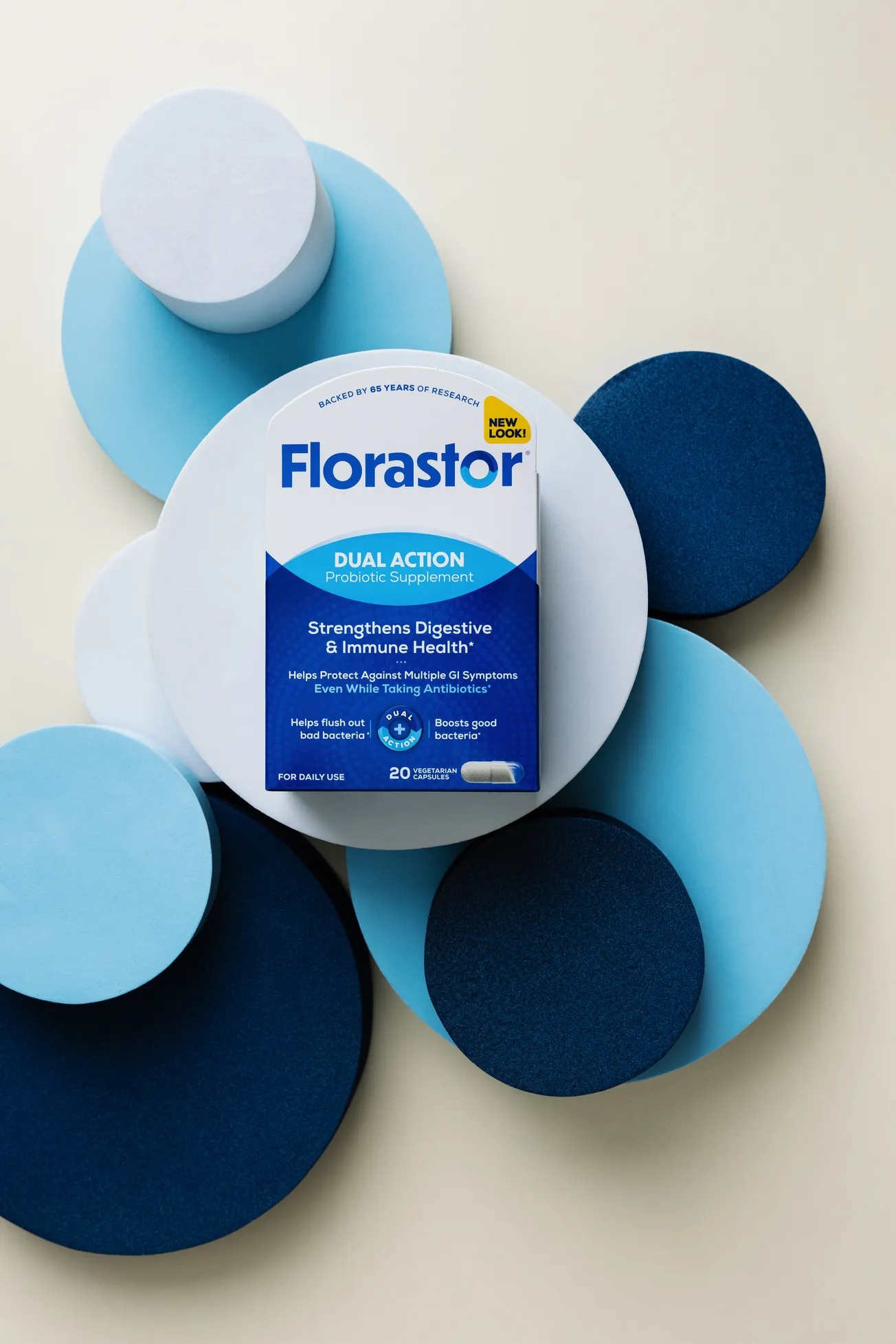The opportunity for pharmacies to fill the country’s health care gap was top of mind during a roundtable discussion conducted by Chain Drug Review at this summer’s NACDS Total Store Expo. Retailers, suppliers and industry advocates discussed the increasing momentum for PBM reform as pharmacies elevate their standing by providing clinical services amid the primary care physician shortage. They also touched on the need for investment and innovation to bolster pharmacist-patient interactions in a fee-for-service model.
PANELISTS
• Steve Anderson, President and CEO, National Association of Chain Drug Stores
• Lari Harding, Senior Vice President of Healthcare Marketing and Sales Enablement, Inmar
• Patrick Hawthorne, Senior Vice President of Pharmacy Network Partnerships, MedAdvisor Solutions
• Doug Hoey, CEO, National Community Pharmacists Assocition
• Kevin Host, Senior Vice President of Pharmacy at Walmart, and current NACDS chairman
• Todd Huseby, Partner and Leader of the Consumer Healthcare Sector, Kearney
• Crystal Lennartz, President, Health Mart and Health Mart Atlas
• David Pope, Chief Pharmacy Officer, XiFin
• Dain Rusk, Vice President of Pharmacy, Publix
• Rina Shah, Senior Vice President of Pharmacy Growth, Walgreens
• Karen Staniforth, Chief Pharmacy Officer, Rite Aid
• Brian Sullivan, Principal, Pharmacy Solutions for North America, KNAPP
• Jeffrey Woldt, Editor-in-Chief, Chain Drug Review
WOLDT: To begin, we’ll turn to Kevin as NACDS chairman
and ask him to give us an overview of where retail pharmacy stands as an industry. Is it glass half-full or half-empty?
HOST: My perspective is rooted in a long history in pharmacy. I’ve been at Walmart for three years now. For me coming to Walmart was coming back to my roots, which are in community pharmacy. I got my start in retail and retail chain drug pharmacy management with a company called Payless Drugstores. It’s how I ended up getting introduced to pharmacy and ultimately why I decided to go to pharmacy school and become a pharmacist. I love the community practice setting, and back in those days I had no clue what a PBM was. I’m not sure if very many people did. We still had stores that were using typewriters, believe it or not, to do some of the labels. And I remember as we got into more automated claims billing, that made things more efficient.
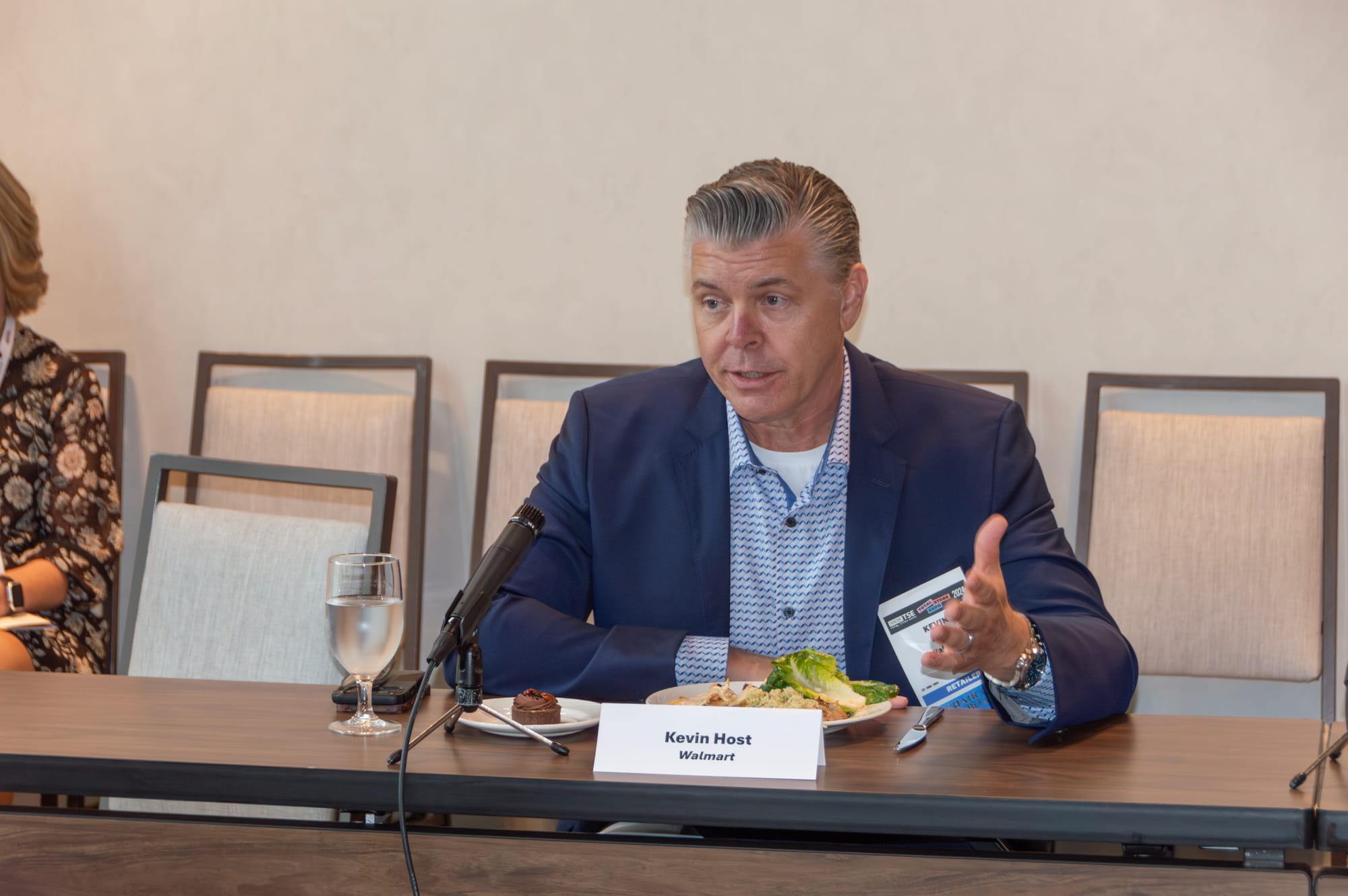
I’ve had an amazing career, with a lot of opportunities to be involved in different parts of the drug supply chain, including PBMs and specialty pharmacy. I’ve run benefit consulting firms. But when I had the opportunity to come back to Walmart I couldn’t resist, because there was so much that I felt had been left undone in the industry, things that I wanted to do when I first graduated from pharmacy school.
So, Jeff, to your question, I’m definitely a glass half-full guy. Pharmacy has made amazing strides to scale up over the years, and it’s one of the bright spots in health care more broadly that deploys technology. We’ll always be that spot where customers go for prescription medications and related care. Most of an average American’s interaction with the health care system is with their pharmacy and with their pharmacist, whether that’s in person or virtually, which will change and evolve over time. I think that’s inevitable.
What really excites me are the clinical services that we have the scope of practice and the authority to deliver in 21 states across the country. In those states we can now do testing and treatment for things like COVID, flu and strep. That’s in the face of an emerging shortage of primary care and urgent care access and physician providers. So, much like during the pandemic when we needed to scale up access to COVID immunizations, pharmacy can do the same for minor ailments like upper respiratory infections. I do think that we’re going to step into the gap and unlock the ability to continue to service Americans for all their prescription needs in the future.
We’re going to continue to make even more of an impact with primary care, and that’s not to replace doctors. We should be very clear on that. We’re there to supplement and augment and provide that access that we’re fully capable of doing from an inaccessibility perspective. Our clinical training permits us the ability and the skill to do that. And we can do it at an affordable rate.
All that’s to say we’re in a great spot, but there’s a lot of work to be done. We need reform that is going to ensure that pharmacy remains sustainable from an economic perspective. Access to care needs to be facilitated through new channels, new technologies. We need to make things on the medical side more streamlined, and that’s a road we’ve been down before, with immunizations most notably. We can do it again. It’s just that the stakes are a little bit higher now. I’m very excited about the future.
WOLDT: Speaking of the economic perspective for pharmacy, where do things stand in the fight to secure PBM reform?
ANDERSON: Frankly, it’s been an extraordinary month for pharmacy. People are starting to get the importance of PBM reform.
We had a news conference back in March outside the Capital building during our fly-in, and Doug [Hoey] was there and he spoke. We received a tremendous amount of press about it. In addition, we developed an ad based on that press conference, and we launched that on June 13 in the Washington market on CNBC, CNN, Fox News and MSNBC. Now the ad is on 92 TV stations around the country targeted towards certain lawmakers. That has been very well received.
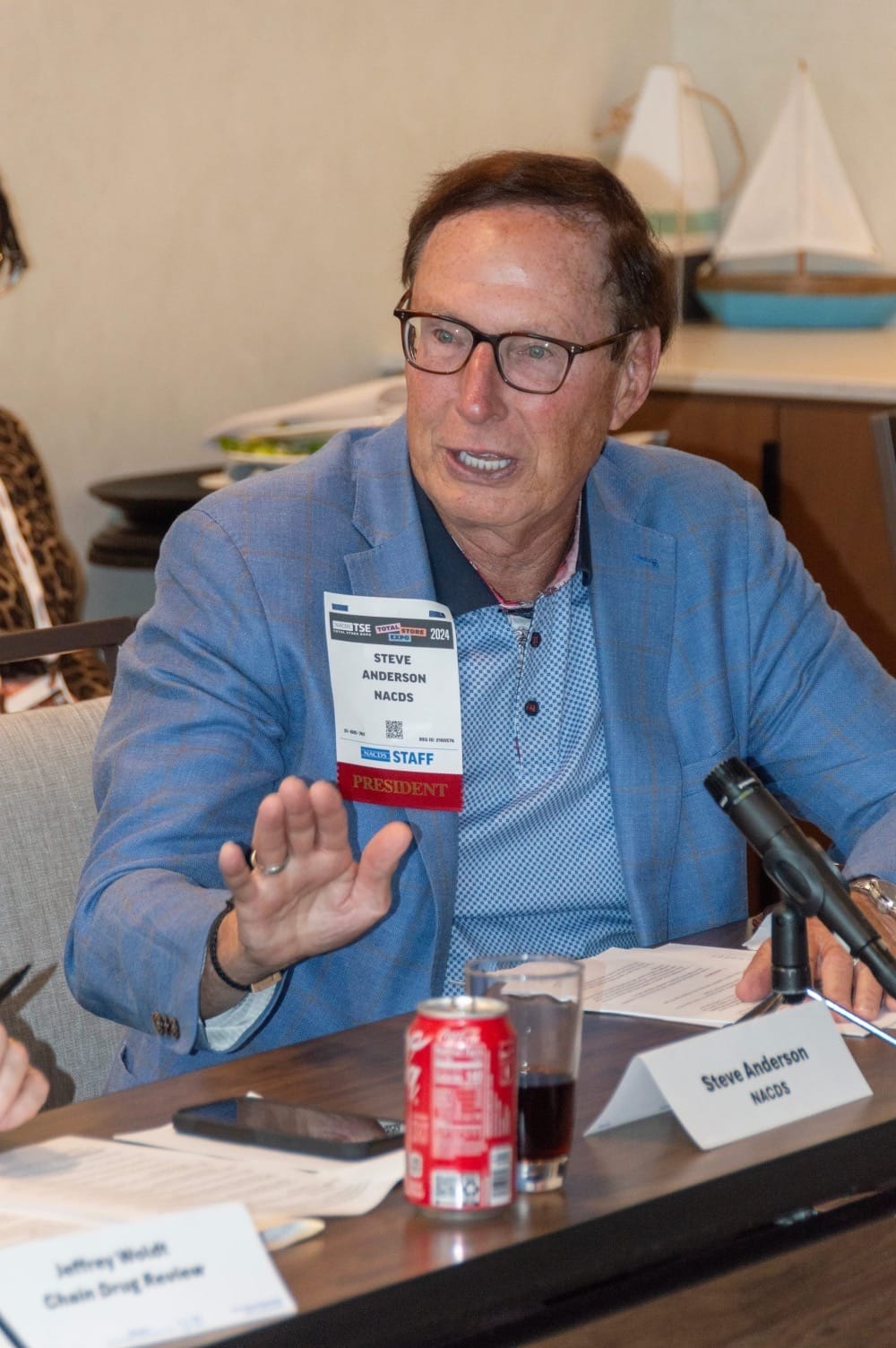
Then pharmacy had a whole string of extraordinary media stories. In The New York Times on February 23 — a Sunday, front page above the fold — appeared one of the best articles I’ve ever read about the PBM industry. If you didn’t read it, I highly recommend it. The article ran for about three pages and drilled down very well. The headline said this opaque industry secretly inflated prices for prescription drugs, and pharmacy benefit managers are driving up costs for patients, employers and the government.
If that wasn’t enough, just three days later on the front page of The Wall Street Journal there was a story about a study that was conducted in Washington State that showed how dominant the PBMs are in the marketplace, especially the negative impact they have had on employers. It was a really important article for us, because that’s the card the PBMs have been playing for a long, long time — the supposed “pro-employer” card. And then in an unprecedented move, there were four articles related to PBMs in The Wall Street Journal within a one-month stretch, with three of them on the front page.
On July 9, the Federal Trade Commission came out with an interim report, which reinforced everything that we’ve been talking about. NACDS participated in that study, and I know NCPA [the National Community Pharmacists Association] did, and others. It was scathing. And if that wasn’t enough, on July 23, the House of Representatives Investigations and Accountability Committee released a report that they’ve been working on for 30-some months, and it was equally scathing about PBM practices. The committee then brought in executives from the three big PBMs and had them testify under oath. Members of the committee were bipartisan in terms of their support for pharmacy and the Americans they serve. And yesterday the vice president on the campaign trail said that we’ve got to rein in the PBMs.
So we’re definitely at a tipping point. The industry has done an amazing job being united and expressing our concerns about the PBMs. People are listening, but we need to get it across the finish line, and the ball is definitely in Congress’ court. I’ve been in Washington for a long time working on policy and political issues, and when people ask if it can get any worse in Washington, it always does — that’s the kind of the chaos that we’re involved in. But NACDS is in a flow state. We factor out all the noise, factor out all the chaos, really focus on what needs to be done and just keep fighting. We’re producing results in terms of what we need to do. But we don’t set the agenda of what’s before Congress on any given day.
WOLDT: Doug, you have fought for PBM reform for many
years. What is it going to take to get meaningful legislation enacted?
HOEY: Steve did a great job of itemizing all the things that have happened over the last six weeks or so, and it’s been amazing to see the progress and the receptivity. Vice President Harris’ remarks yesterday were particularly extraordinary, because sometimes we’ve hit a dead end at the White House. We did have former President Trump say the word PBM, but to my knowledge he’s the only president who has ever done so, and he didn’t get anything changed. So to have a presidential candidate say something about PBMs and say it in way that associates them with higher drug costs is enormous, because the talk track of PBMs over the last three decades is that they save money. Now all these results are showing that they don’t save money. They inflate costs.
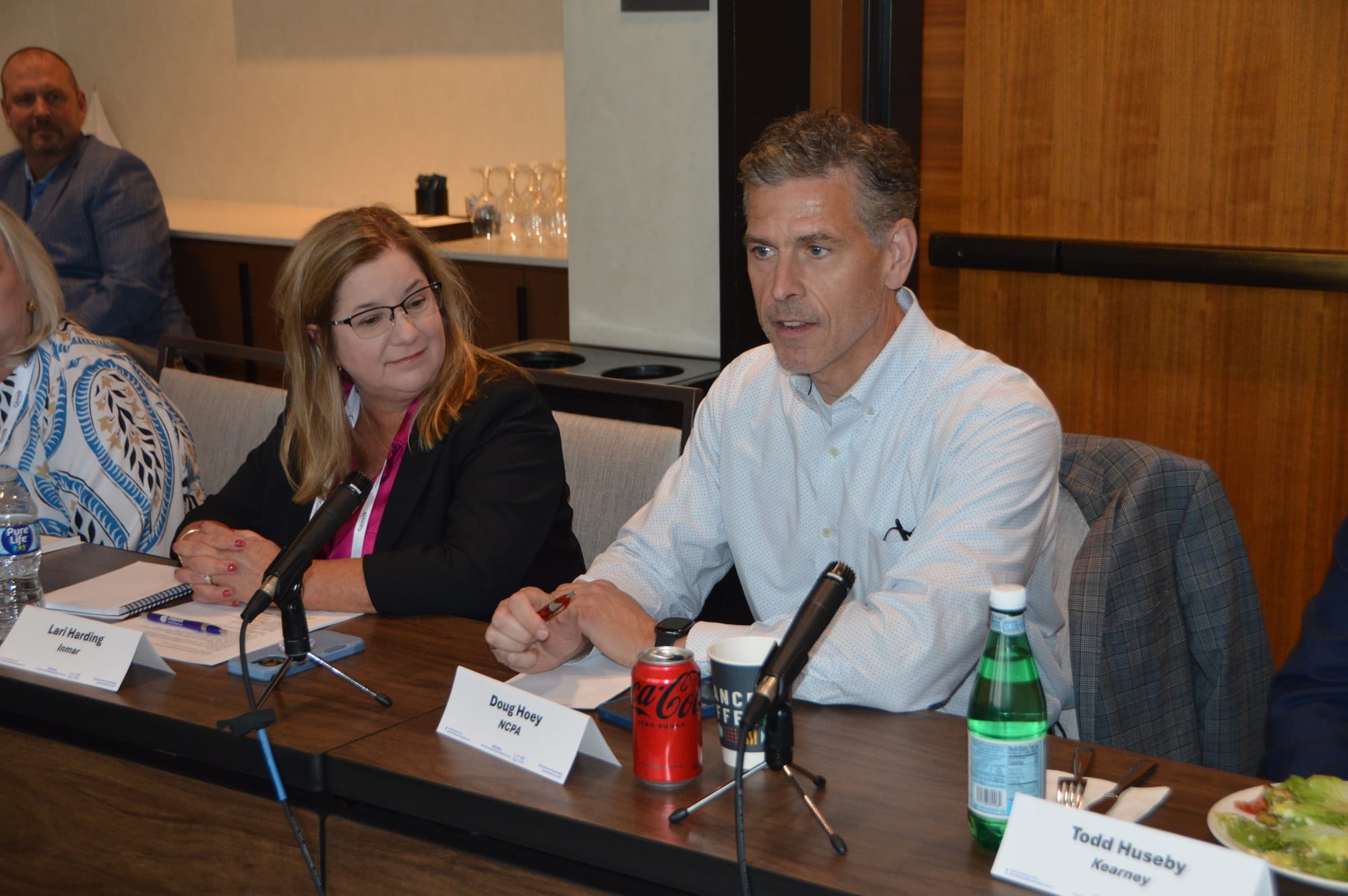
To your question, how do we get it over the finish line. I don’t know other than to keep doing everything that we’re doing right now to put pressure on members of Congress. NCPA has launched Finish the Fight, a campaign that targets consumers. We previously had 20,000 pharmacists send messages to Congress in the first quarter of the year, and that was good to educate members. When we had our fly-in, when NCPA members would meet with legislators, they didn’t have to explain what they were there to talk about. Many times they would get preempted with, “We know you’re here to talk about PBMs, and they’re bad guys, and we’re on it.” That’s great, because they couldn’t spell PBM four years ago.
But we decided we needed consumers to also weigh in. Our campaign is similar to the NACDS campaign and has had spots with MSNBC, CNN and Fox News. So far, over 30,000 consumers have contacted members of Congress. We got a little edgy with some of the collateral material — if you have seen the spots with PBM leeches or PBM career day, which is my personal favorite. There’s some humor in there, and we did that very intentionally to make it memorable and to motivate consumers hopefully to take action.
Congress has a chance over the next few months to put it over the finish line, to reform Medicaid payments, and do the beginning of reforming Medicare. We have to continue making it unacceptable for them to not take action. The House has at least passed legislation for Medicaid reform, and now we need the Senate to do the same.
We just all have to keep on exerting that pressure and debunking some of the counter-propaganda that the PBMs have been releasing.
One last thing, I’ve had the pleasure of being invited to these sessions for a number of years now, and Kevin, when you gave your remarks, we were all in total alignment around filling gaps in care. The future of pharmacy is in getting paid for our services. However, we also have to be paid fairly for dispensing. If you asked any one of us for our vision for community pharmacy, it would have the elements that Kevin described, and I think that alignment is extraordinary and very powerful and bodes well for the future of the profession.
ANDERSON: One thing I’d just add quickly is that we’ve all taken on all levels of government, all branches of government. We’ve enacted 150 new PBM laws in the states over the past three years. On July 26 of this year, Pennsylvania Gov. Josh Shapiro signed a really tough bill into law at one of our member-company stores. We also were successful in getting some vaccine issues covered in the new law.
SHAH: Payment reform has been an issue for a very long time, and it’s underserved communities that are being impacted the most, which exacerbates an already fragile system.
It’s in the states where we operate that we have a direct impact on patient care — due to our current reimbursement structure, we are having to reduce hours of operation or alter our operating model or close our stores. It’s not what any of us want, but we’re coming to the point where we have no choice, and so this is the time to get as many advocates involved as we can. Getting everyone involved will be critical so we can make some positive movement across pharmacy as an industry.
RUSK: Over the past eight years it’s probably one of the most dysfunctional Congresses I’ve ever seen. But PBM reform is actually something that they all did agree on, and it’s what you just touched on, because these congressmen and congresswomen are also patients. They actually feel it. So it’s about as bipartisan as it gets.
And to your point, Doug, it’s mind boggling to me that with the momentum that’s there that this can’t get done. I don’t know that we’re ever going to be in a better environment and climate than we are right now. It has to get done, because with a new administration different priorities come on line.
WOLDT: Dain, last year at this session you were talked about the victory on PBM reform in Florida. What has pharmacy’s experience been in the 12 months since that law took effect?
RUSK: These are Fortune 100 companies and if you don’t have the full reform from both a federal and a state standpoint, they are going to find ways to protect their interests. While the Florida law’s been effective, we’ve learned that there are some gaps and we need another bite at the apple, so to speak.
I’m fortunate that the lion’s share of my stores are in Florida. When you’re someone like Rina at Walgreens there may be some wins with the reform passed in Florida, but it doesn’t mean that PBMs aren’t taking liberties in other states to balance this out, because we negotiate national contracts, not state-by-state contracts. So I would say the answer to your question, there have been some wins, but we’ve learned that PBMs pivot quickly. You have an initial stop gap here with the state reform but, as they pivot, something new opens up over there and we still have to rein that in.
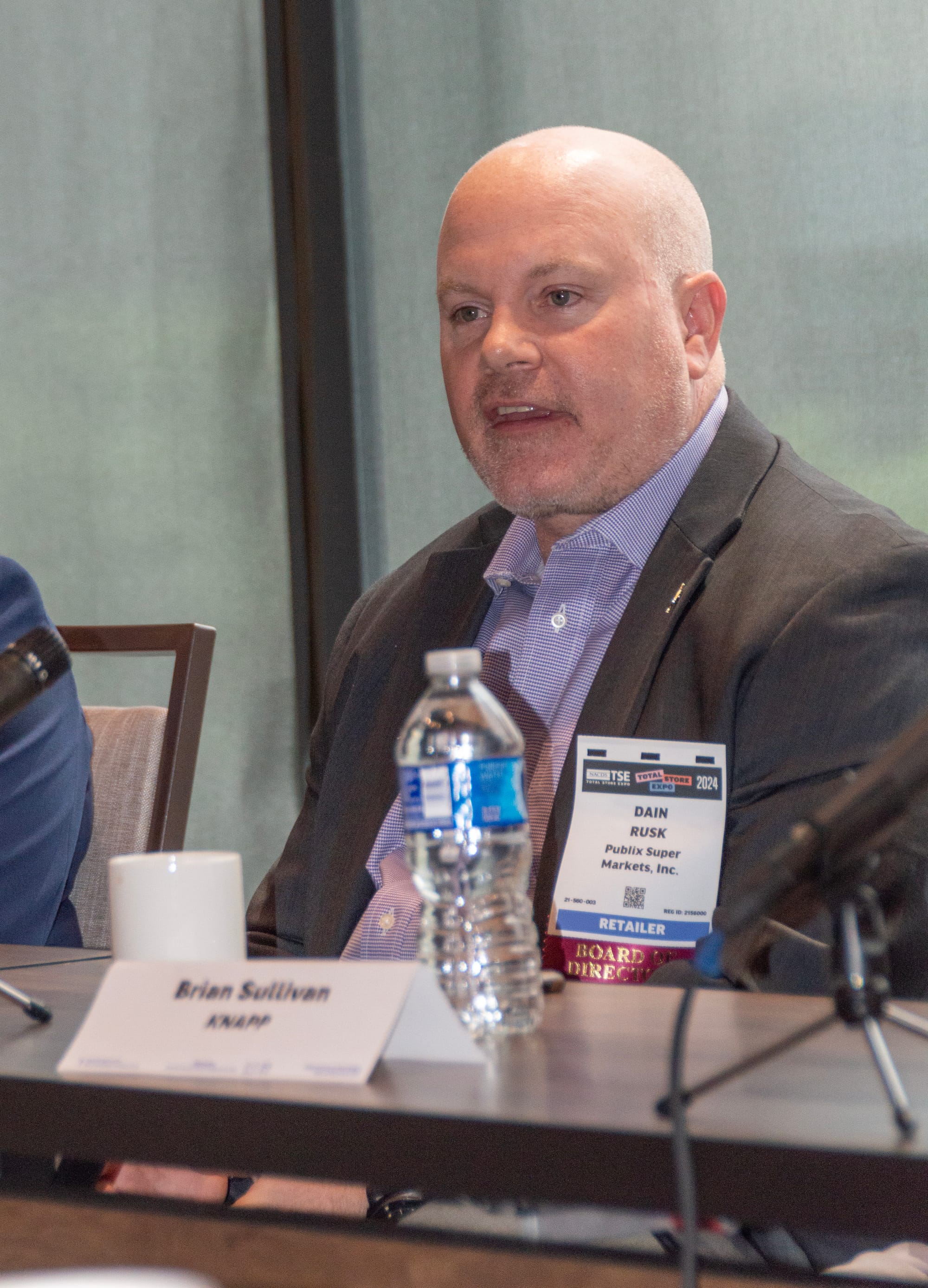
HOST: Dain speaks to something that’s really important. Even though we have these PBM laws that are enacted in the states, the enforcement action can be lacking for a variety of reasons.
There are some bright spots though, and I’ll point to Arkansas, which recently looked to take a measure of action against PBMs. The state is seeking to enforce some rate floor language that’s out there. This action, one of many potential future actions, is a step in the right direction, and we need more of that. We need to continue taking steps forward in the states.
HOEY: Certain attorneys general have become more interested in this issue. To Kevin’s point in Arkansas, the $1.4 million, of course, is budget dust to these PBMs, but the enforcement and the penalties that could come beyond the fiscal penalties, that’s where the teeth are in some of these state laws. But there is an increasing interest by AGs and some insurance commissioners as the magnitude of the issue rises. And, again, it’s huge to have the Harris campaign included. If both presidential candidates made this an issue it would elevate it even further up the food chain for both Republican AGs and Democrat AGs.
So we are starting to see some signs of life with that enforcement where they’ve previously been, frankly, asleep at the switch. It wasn’t a high enough priority for them to take action. But we are beginning to see some changes there, which is a very positive development. It still doesn’t help in Medicare though, and Medicare is increasingly the biggest pain point, at least for our independent members. It’s 35% of their business. We have a few states where they’ve been able to enact Medicaid laws, cost-plus Medicaid, that is satisfactory even in the commercial space. But they are still getting clobbered because of the Medicare rates.
WOLDT: Karen, are the chains feeling this pain as well?
STANIFORTH: Well, yes. One of the things that Rina said is really important. There’s been a lot of change in the drug store industry. Right? My company is one of the companies that has had to change. But once the communities around us start to see the impacts of closures — together with all this other momentum — people will start to say, “Well, maybe if I didn’t fully understand what we were talking about before” … now they really see the impact to the communities and access to care, especially in communities that really need retail pharmacies.
That is adding to the knowledge that people have about what’s going on. We’ve closed a large number of stores across the pharmacy industry. Other chains are talking about closing additional stores. Everybody is impacted, not just independents. There’s a huge impact to communities. So this momentum is driving everything forward as patients start to see that every day there’s an article in a newspaper, on the news, about a community that lost another pharmacy and patients are on there saying, “What am I going to do?” It doesn’t matter whether it’s a big chain store, an independent or a grocery store. It’s the patient impact and voice that’s helping us now push the message forward as well as everything that we’re doing. Coming together is what’s really making a big difference.
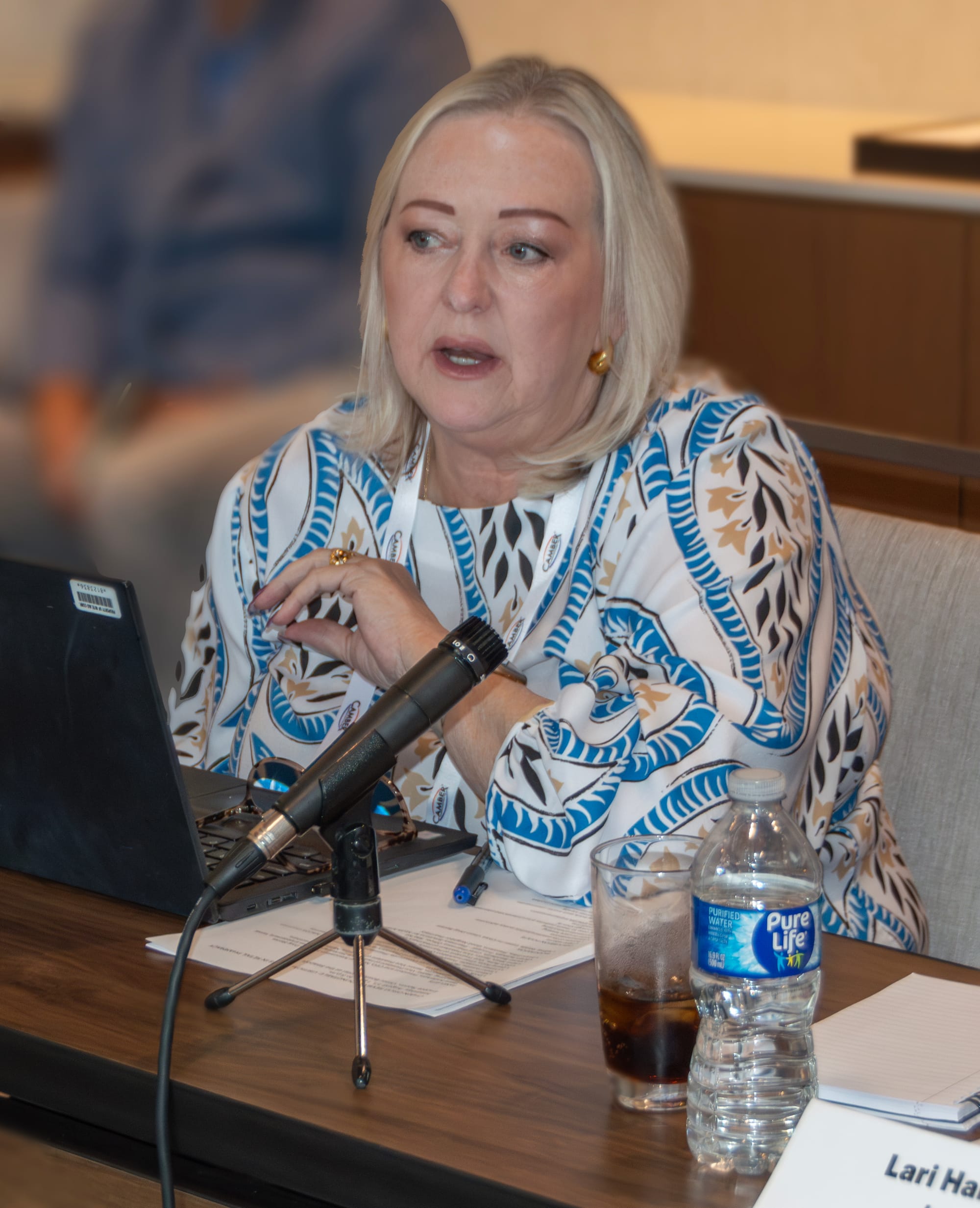
RUSK: Until recently people thought this was just an independent pharmacy problem. I remember when we were having this conversation with the governor’s office, and our response was that over the next year this will impact everyone. As Karen said, you see it everywhere. People are trying to rightsize their fleet, because they can’t afford to run unprofitable stores anymore.
HARDING: Actually, I looked at a lot of data in preparation for this meeting and did some comparisons between 2023 and January to June of 2024. I took 2023 net of DIR, and then looked at what happened in January to June. Factoring in new rates, DIR being taken at the point-of-sale, the mix of brands and generics, and the GLP-1 impact, the net effect is that in January to June of 2024, on average, pharmacies lost 84 cents per prescription in gross margin between ’23 and the first half of ’24. And that’s really material.
WOLDT: Crystal, how is this situation affecting your members and independent pharmacies in general?
LENNARTZ: Picking up on what Kevin said, over 60% of our Health Mart pharmacies are in high Social Vulnerability Index areas — either urban or underserved. Over 800 of our Health Mart or Health Mart Atlas pharmacies are the only pharmacy in the ZIP code. So we’re very concerned about their viability and them being able to continue to care for members of their community.
But Kevin also mentioned bright spots in the beginning of his comments around scope of practice. That’s really been an area that we’ve been focusing on from an advocacy perspective, and it’s great to see the momentum at the state level because I think we need a combination of reforms. We need to have the pharmacy-provided services and the ability for the pharmacy to be fairly reimbursed for providing them as well.

WOLDT: David, would you like to jump in and tell us how you view scope of practice.
POPE: From our perspective, pharmacies stand in the gap and are the front door to health care in the smallest communities. There may not always be a traffic light, but there’s usually a pharmacy there able to provide care. To enable pharmacists to offer care at scale, of course, it takes advocacy. It also takes some innovation, and it’s going to take some expertise for us to make that happen.
We’ve been really pleased on the federal front. Pharmacies in the coalition will have to work together to generate movement on the Equitable Community Access to Pharmacist Services (ECAPS) Act. From a state perspective, we’ve also seen that pharmacies are aligning to advocate for change better than they ever have before. And, of course, as mentioned before, the stakes are so much higher.
We’ve also been pleased to see from our data that pharmacies are truly standing in the gap for test-and-treat, for example, at times when it’s just not easy to see a physician. In fact, XiFin data shows over 50% of the test-to-treat visits that pharmacies are now billing for are outside the hours of 9 to 5 or on weekends. So, we’re seeing some incredible movement there as pharmacists bare providing access at critical times and locations.

Finally, we’re seeing movement on the payor side as well, where, again, pharmacy has become more and more aligned towards payor access, which is still a challenge, but it’s improving. We now have pharmacies providing an office visit with testing as part of it. And that’s just on the sick side. If we look on the well side, we’ve got pharmacies expanding rapidly — prescribing hormonal contraceptives as well as a number of other medications.
WOLDT: Patrick, how does that square with your view of the market at this point?
HAWTHORNE: Kevin made the point about physician shortages. Seventy-seven percent of community pharmacies serve a population of 50,000 lives or better. And if you think about everything we’re talking about or the lack of physician access, we can do a lot more in pharmacy. And we are with services like test-to-treat. What’s happened from an immunization perspective is nothing short of amazing.
But we see some states that are very progressive and some that still have a long way to go. So it’s great to see all the camaraderie here. The question becomes how do we take it to that next level again and again and again, state by state.
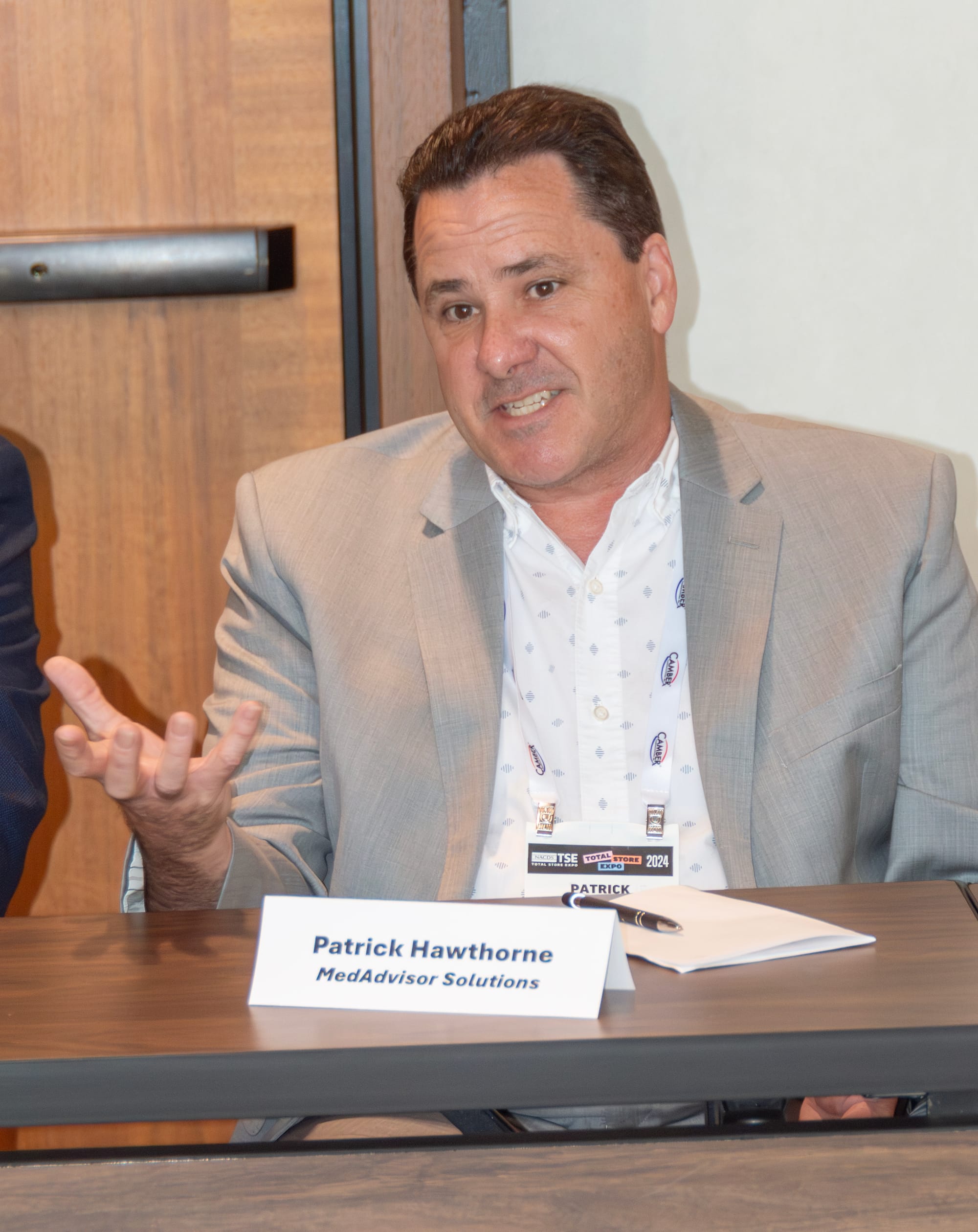
WOLDT: Todd, from a financial perspective, can pharmacy take on a bigger role at a time when stores are closing and some companies are retrenching?
HUSEBY: I love all the optimism. I wish I totally shared it, because, to your point, there are some clouds too. It seems to be that innovation needs to be top of the agenda in order to be able to take action to get where we want to go. I see Canada doing some great things, but they’re willing to pay for it.
So that’s one route we can go down as a country, or we’ve got to go down the road with operating model changes that are going to “lean’ everything out, and we’re seeing that play out at lower cost. I’m not certain which way we’re going to go. Investors would tell you it’s going to be the lower-cost model, but something significant will be lost if we go that route without thinking hard about should we be making sure we can afford it. Canada, not that far away, gives us a lot to look at.
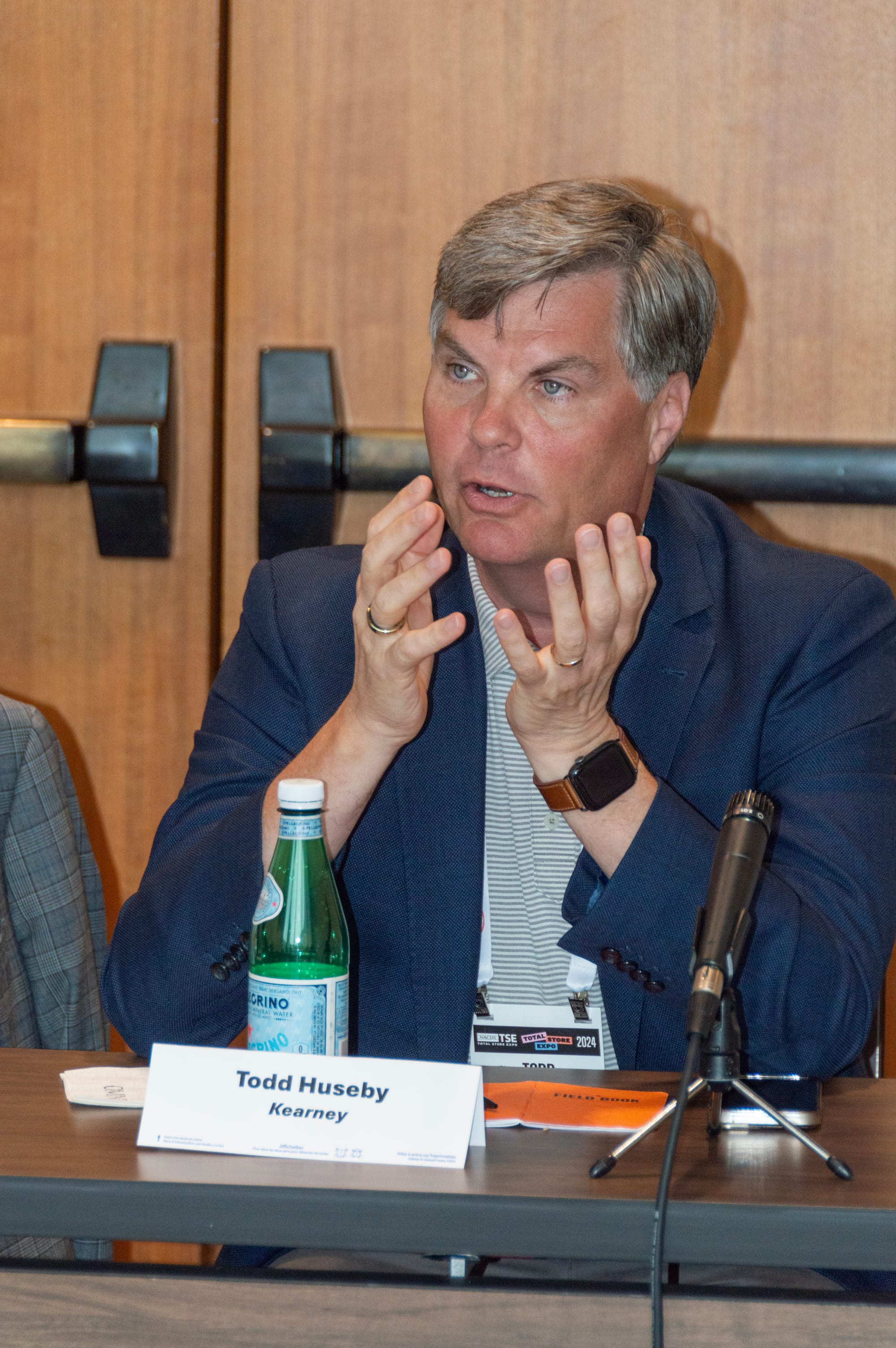
WOLDT: Brian, would you like to talk about the operations piece?
SULLIVAN: I’d like to comment on the second part of what you were saying, Todd, getting the cost out of it. There are two aspects of expanding scope of practice. One is trying to get those costs out so that you’ve got an operable pharmacy that’s making a profit. And the other is if you’re going to expand scope of practice, yet you’ve got a shortage of pharmacists or pharmacy techs, how the heck do you apply them?
What we try to do in the background is to take as much work out of the retail pharmacy as possible that is mundane work, that is the touches that don’t add value, and automate those, whether it’s at our central fills or with the automation that we’re bringing into those retail pharmacies. The first point you made, that if we could get some of those changes that they’ve made in Canada applied in the U.S. it would be great, but the defensive posture or the actionable posture is where we can help on cost reduction.
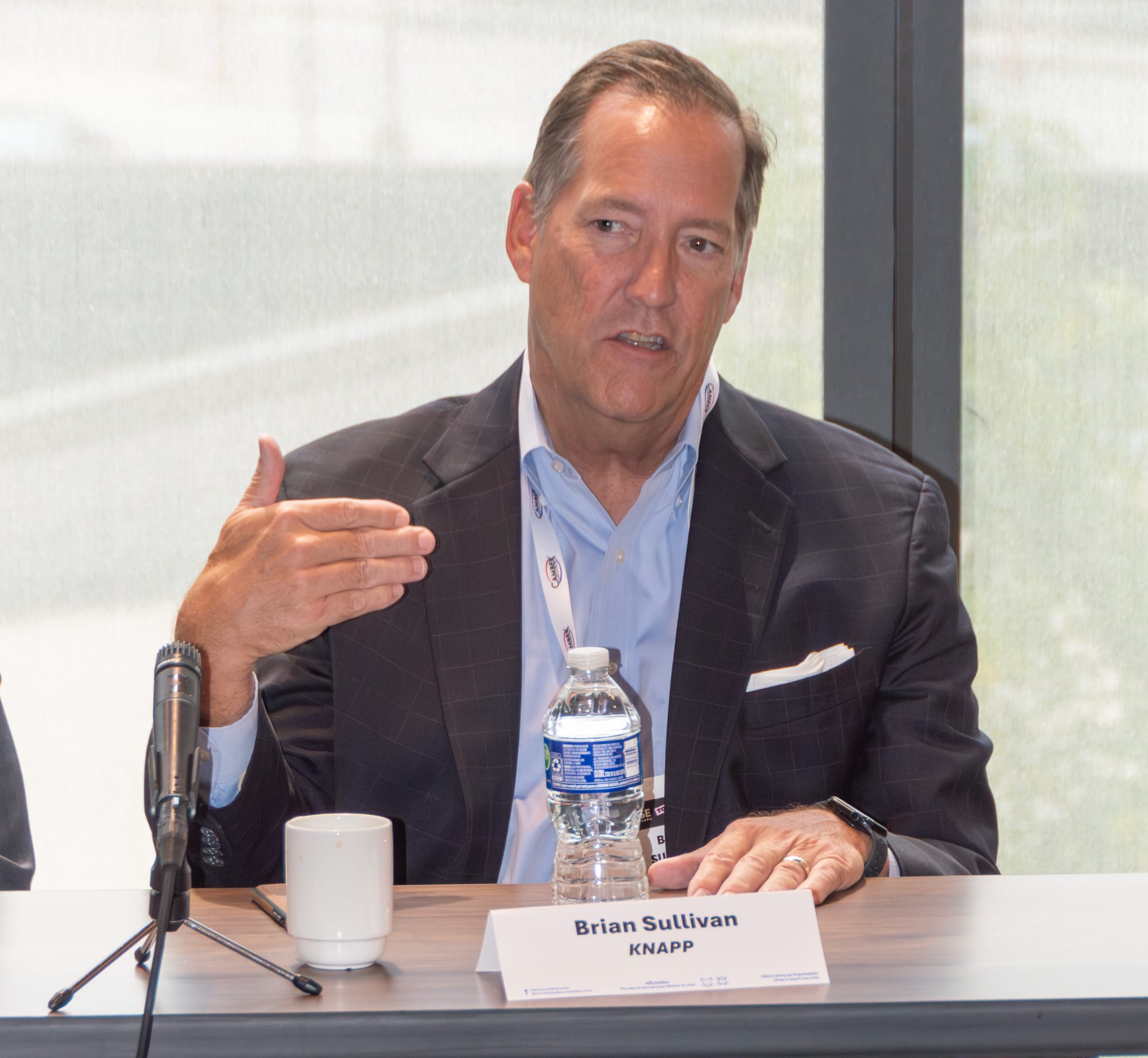
HUSEBY: It might be both, to be quite honest. A lot of the things that are so inspirational about what’s going on in Canada is not just the funding for dispensing of drugs, but the scope of practice that’s been permitted in many provinces. It’s not universally available, but province by province, they’re being pretty progressive.
And to build on your point, Brian, while I love all the automation in order to free up the labor that we have — and labor is getting scarcer and scarcer as time goes on — we’ve also got the rise of generative AI, which, if we can innovate and train those models clinically on pharmacy over the next many years, I think we can get to a point where not only are pharmacists universally better in what they’re practicing for care, but if we make it available to patients in some cases, then we’ve offloaded a lot of that work to patients for their own consumption.
So we still need pharmacists. I heard the dean of the University of Texas School of Pharmacy. He was talking about the importance of not only artificial intelligence, but emotional intelligence and relationship intelligence as sort of the core of what we need to be aiming at and what he’s helping prepare students for. But, look, we can automate a lot of the things. We can even automate some of the most basic clinical things in order to let the empathy that pharmacists exude in their communities shine through.
SULLIVAN: So what you’re leaving intact is where the most value is, where those touches matter most — the interaction with the patient and the intelligence that the pharmacist can bring that the artificial tools probably can never bring, right?
HUSEBY: Yes.
SHAH: I’m sure every person has a family member or they themselves have gone through some sort of health journey, and mine is very recent. But I would say that my experience of engaging with the health system and pharmacy — all of the scheduling of appointments, billing, administrative work — was very much technology enabled. I didn’t have to physically spend a lot of time on it, maybe someone else did, but it really felt instantaneous to me. That’s where it felt like the health system figured out a way to take all the administrative tasks and automate them as much as possible.
Then when I had basic questions on side effects, things that were just general in nature, the nurses would chat back and forth. It didn’t require a phone call, but it was addressed through MyChart, and it was efficient for the nurses because it was in between patients, they didn’t have to answer the phone and could engage on their own time. It was also efficient for me, because I didn’t want to be on the phone, and so it worked out for everyone.
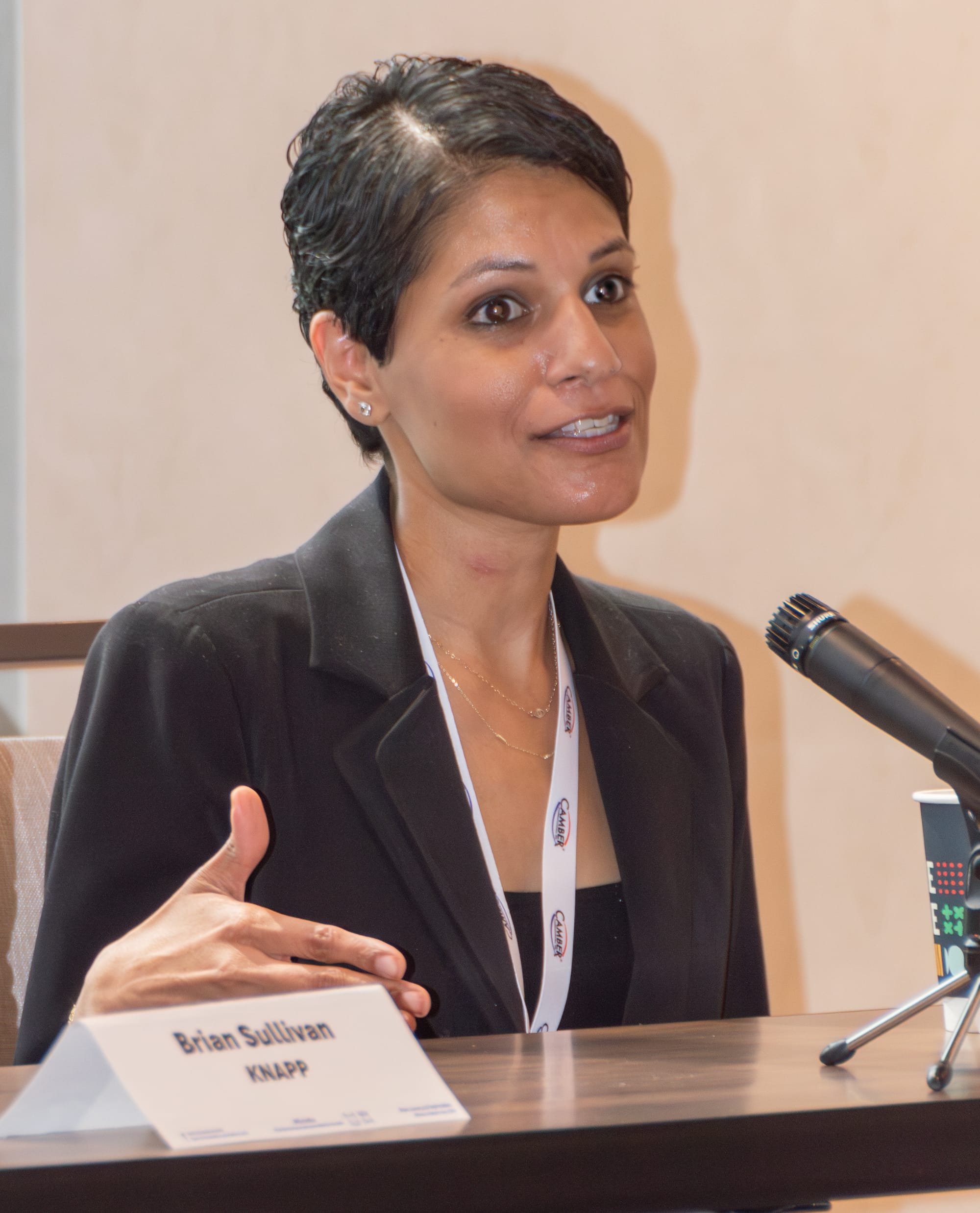
And then it was like 3:00 in the morning and I felt like I had a fever and needed to talk to my oncologist, who had given me his cell phone number. I texted my oncology doctor and nurse. They responded in five minutes saying, “OK, let’s monitor this for 30 minutes” and then told me, “You know what, you should go to the ER — let’s get it checked out.” I ended up sick with pneumonia, so it was the right call to get examined immediately. I had leveraged my oncology team at the right time, where I didn’t call during the administrative pieces or during even the minor ailments; it was really when I needed it.
The reason why I share this experience is because it made me think of how we practice pharmacy, and we currently do automate a lot but have room for growth. Our pharmacists aren’t scheduling patients’ appointments for flu vaccines. But, right now we are spending a lot of time on tasks that don’t require the pharmacist or the technician; they are administrative in nature. So, are there methods across the process to make it self-serve for the patient? AI and technology can make a huge difference on many administrative tasks that we perform today.
On the opposite end, I wouldn’t trust AI right now for my oncology care or my pharmacy care. I would trust an experienced clinician. And that’s where the pharmacist can come in and play a massive role. We do still have a lot of work to do on the operating model to take costs out, but we also need to redesign it so that it’s focused on care and not process. Right now, it’s very much focused on process.
We currently have a lot of technology in place — centralized services, automation, digitization, that’s all there — but we need to start stitching it together for the customer in a different way.
The regulatory environment is going to be very telling. A year from now, maybe we’ll have a different opinion, but if we’re able to get some of these pieces on provider status or other elements through for payment reform, that would provide momentum for us to then provide care in a different capacity.
HUSEBY: If we do go down the innovation path strongly, that’s going to require capital. So from these share prices that are pretty bad right now in our for-profit pharmacies, we’re going to have to find investors willing to put money into the industry. Making that argument so that we can get to that next level and take advantage of all that will be really important, because we’re going to have to then change the operating model.
HOST: Todd brings up a good point too. There’s a need for that capital investment. There’s a need for investment in general. Rina, you’re spot on. I go back to the ECAPS bill and the willingness of this country to pay for this type of care for its seniors. It would be so easy to make those investments if ECAPS would go through.
It took, what, two years just to get a CBO [Congressional Budget Office] score? And even that, what is seemingly such a small score, feels like a mountain that we still have to climb. Why can’t we get seniors that level of care? Seems like such a minor investment that society can make. And yet, if and when it eventually passes, that will make it so much easier to make these investments.
SHAH: We’re at a pivotal point right now where certain dominoes need to fall in order for us to be able to either double down in the area or take the state-by-state approach. A state by state approach ends up being a little bit more piecemeal.
HOEY: A point that I’m hearing over and over is the importance of activating patients and consumers. And, talking about Canada, they had success. They started out with one of their smaller provinces, and then they had their minor ailment scheme, which involved things like acne, canker sores, cold sores, diaper rash, hay fever, hemorrhoids, impetigo and UTIs.
UTI treatment was a game changer. They started in Alberta, a province with a population of 5 million or 6 million. And that became such a convenience for women, because it’s limited to females who have been diagnosed with simple, uncomplicated UTI. So they’ve already been diagnosed and are coming back in. Before that, they had to schedule an appointment with their doctor or go to urgent care or the ER. Now they can come to the pharmacy. Now they have the convenience. Now they can get care within a short amount of time and be on their way, and not disrupt all the other things they have going on.
The consumer voice is what drove change. That, I think, is a challenge for all of us — how do we get more patients and consumers involved? To the extent that consumer voices get louder, that’s going to be the fastest route to change, whether it’s ECAPS or in the states or federally. A lot of us in the room need to get together and talk about what’s going to motivate a consumer or patient to get more involved in demanding the availability of appropriate services at their local pharmacy.
RUSK: To your point, consumers here in the United States want that. The difference is they’re getting reimbursed for it in Canada. We’ve given away our services for so long that people have actually come to expect that pharmacy is just going to stand up and do it. So fighting for provider status is critical, because I think there are plenty of models for us to look at and say we can take costs out of the system. It’s just crazy that we have to actually fight to get reimbursed. Dental hygienists get reimbursed for their services, pharmacists don’t. Every health care provider in the system in the United States gets reimbursed for their services, except pharmacists.
There are plenty of models to show we can take costs out of the system. We can actually create some really unique clinical, value-based care models if given the opportunity to be recognized as providers of health care. But if you’re not going to pay us for it, we’re just going to remain in this vicious circle where we’re giving away our services for free.
HAWTHORNE: We’ve talked a lot about Canada, and Karen and I have talked a little bit about this. There is a lot to learn from other countries. We have a presence in over 95% of the pharmacies in Australia, and they get reimbursed $85 for what we would consider an MTM for a diabetic patient. Because of our scale, we’re able to support a national movement to extend the scope of practice for pharmacists, and we’re seeing programs being rolled out across the country that are customized to the needs of the community. As a result, we are seeing pharmacists more ingrained as a part of primary care delivery — which is making care more accessible and convenient.
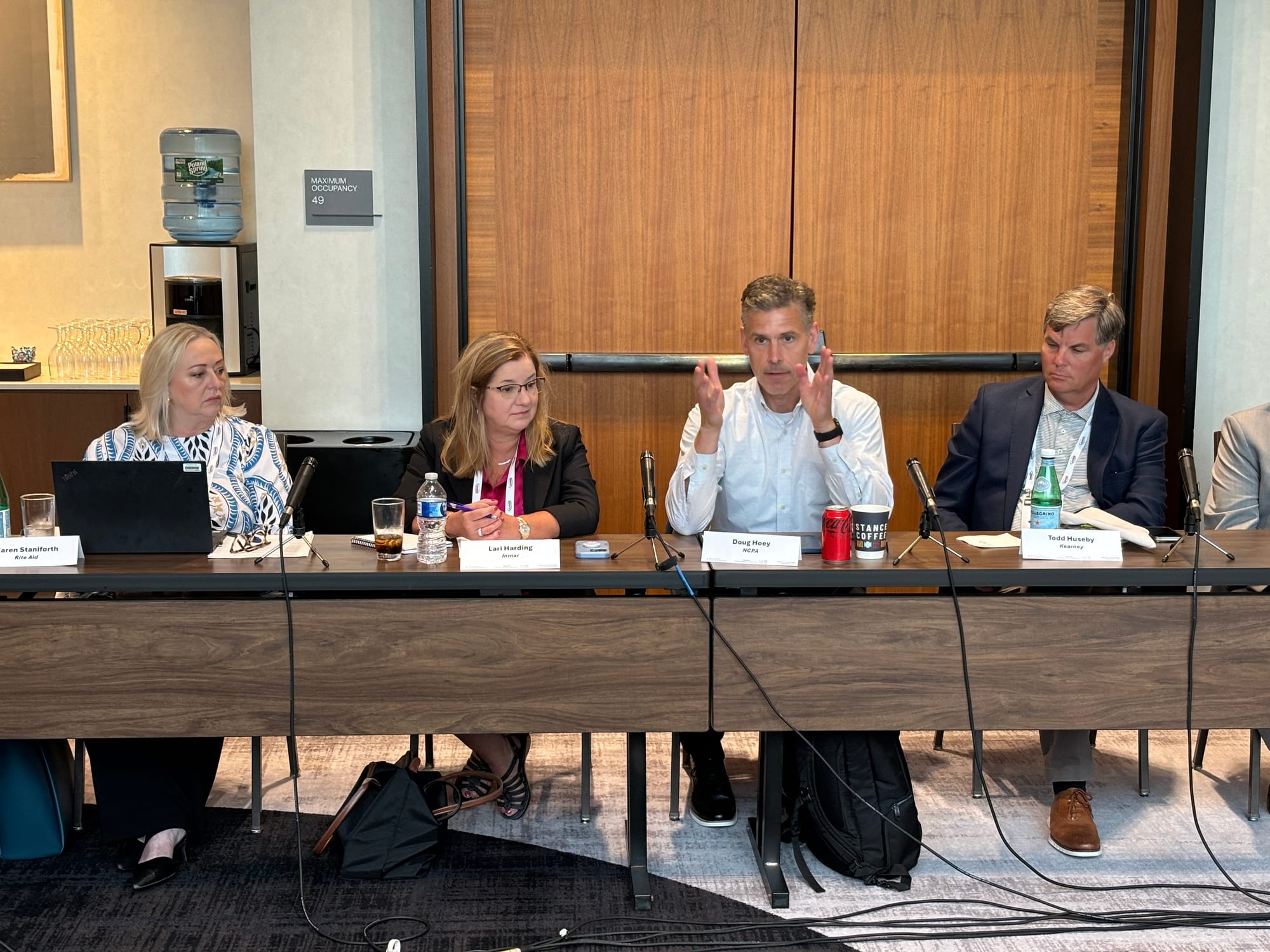
STANIFORTH:
Patients would be more willing to come into the pharmacy if they knew that the pharmacist could sit down with them. The pharmacist would have time to spend, and then we could bill their insurance or however the billing would work. At least patients would get the immediate care they need. What’s going to push that is what happens in pharmacies when providers are not available and pharmacists provide that care and get reimbursed; consumers will start to utilize that service.
If a pharmacist was truly a frontline health care provider — and cover a list of things which a pharmacist can easily treat, that sort of list of, let’s say, 10 ailments, like pinkeye, impetigo, etc. — consumers would respond enthusiastically. Look how quickly our communities jumped into, “Oh, I can get immunization at a pharmacy. Wow, I never have to go to my doctor for a vaccination again.” The same movement would happen if we could just get the services covered and get reimbursed.
It would also help with the personnel shortages we talk about. More kids would want to go to pharmacy school because they would come out of college and be able to truly practice clinically. That goes back to your comment that if we take the mundane, everyday maintenance drug dispensing out of the store, it would fix a lot of things around patient care. At the end of the day, that’s what all of us are really focused on — taking care of patients and communities.
Patients would be more willing to come into the pharmacy if they knew that the pharmacist could sit down with them. The pharmacist would have time to spend, and then we could bill their insurance or however the billing would work. At least patients would get the care they need. What’s going to push that is sort of what happens in pharmacies when providers are not available; consumers will start to step more into that.
If a pharmacist was truly a frontline health care provider — the list of things around the world which a pharmacist can easily treat, that sort of list of 10 ailments, pinkeye, impetigo, etc. — consumers would respond enthusiatically. Look how quickly our communities jumped into, “Oh, I can get immunization at a pharmacy. Wow, I never have to go to my doctor for a vaccination again.” The same movement would happen if we could just get the services covered and get reimbursed.
It would also help with the personnel shortages we talk about. More kids would want to go to pharmacy school because they would come out of college and truly practice clinically. That goes back to your comment that if we take the mundane, everyday maintenance drug dispensing out of the store, it would fix a lot of things around patient care. At the end of the day, that’s what all of us are really focused on — taking care of patients and communities.
WOLDT: Crystal, are Health Mart patients eager for pharmacies to do more?
LENNARTZ: COVID was a big catalyst for all of us in terms of patient expectations of services available at the pharmacy. Many of our pharmacies, chain or independent, have provided services for a while. So, I think it was a matter of showing consumers what we’re able to do.
At this stage, we’re seeing pockets of payment opportunities for new services. Our Health Mart Atlas pharmacies had the opportunity to take part in an exciting pilot program led by a payer. This program helped pharmacists connect their patients to services that address basic needs. The pharmacy staff — either pharmacists or technicians who are community health workers — did screenings and referrals, particularly for patients with socioeconomic concerns. Besides offering services, the pharmacist and their staff also referred patients to community resources using a closed-loop system. This was our first opportunity to capture social determinants of health impact data while also reimbursing pharmacists for the screening work and referrals. It would be exciting to see initiatives like this continue and expand.
Immunizations, medication, therapy management, test-to-treat, some of the clinical services that are happening today are great, but they’re happening still in pockets and not as widespread as we’d like them to be.
POPE: Pharmacists stood in the gap, right? There’s no doubt about that, and they continue to do so. We’re seeing a rise in both fee-for-service and value-based care encounters as well. Again, we bring a lot of value to payors and a lot of value to the health care of America — especially in the rural space. Pharmacies have been balancing both fee-for-service and value-based care opportunities in separate pathways for many years. Pharmacies are now seeking scalable solutions that reveal both value-based care opportunities from plans and allow fee-for-service opportunity documentation and billing. It’s going to take some technology to get there, but we’re seeing a lot of movement right now and a lot of positivity.
WOLDT: Kevin, Walmart’s Specialty Pharmacies of the Community are one attempt to tackle some of those challenges.
HOST: Our Specialty Pharmacies of the Community, aka SPOCS, are the result of our looking across our fleet of pharmacies, and asking how do we upscale our pharmacists and our technicians? How do we provide access to those biologic medications, which perhaps require special handling, cold chain or otherwise? And we’re trying to ensure that patients in those communities have access to the care that they need.
I alluded to the small company I ran before Walmart, which was very much focused on HIV. We were specifically going into communities where there were STI clinics, mostly federal grantees, and enabling a pharmacy to be built in those spaces. This is not too dissimilar. We all have stores that are in those same communities, but creating that level of care takes some extra effort. So we call them specialty pharmacies, and they may only provide three or four therapies. They’re not full-service specialty pharmacies like what I ran back I the day at Optum, but they make a meaningful impact.
Specialty pharmacy now is 51% or 52% of the overall drug spend in this country, but only about 4% of the utilization. So you have a high-risk scenario there where those 4% of claims — let’s call them 4% of patients — when they need something the stakes are very high economically for the payers and for themselves. Rina, to your point earlier, when they need access to care, if it’s 3:00 a.m. it needs to happen. The example you gave, is the exception, probably not the rule in a lot of cases, but that’s what we all need to aspire to.
SHAH: That’s right. I found it shocking that my doctor gave out his cell phone number, something he does with everyone that he serves, but that’s not always case. I just think of the individuals that don’t have access to care, don’t have a hospital within driving distance, don’t have someone that they can lean on. Our community-based specialty pharmacies, which are very similar to what Walmart is doing with its SPOCs, serve patients where there’s an access-to-care gap and they can really play a part on that health care team.
These are the environments that students want to come out of pharmacy school and practice in. When we think of these locations, they’re embedded in health systems, or right next door to health systems, and they are connected with a physician care group that is one team focused on patient care, which is the ideal practice either for specialty or primary care in the future.
WOLDT: Steve, is it realistic to enlist the patient in the battle to move the needle on PBM reform and scope of practice?
ANDERSON: Absolutely. People look to the pharmacy because, as stated earlier, it’s always there and it’s always dependable. There’s a group called the National Conference of Pharmaceutical Organizations, and we had somebody from the Hoover Institution come in and speak. He said that the American people don’t want anyone messing around with their health care. When you talk about vast changes in health care, they’re afraid that they’re going to lose what they have. But, by contrast, there are opportunities to improve health care by taking a more proactive approach to what more pharmacies could do. Rather than putting our issues in terms of health care reform, which can put people on the defensive, we put our issues in terms of protecting and advancing access to their trusted and convenient access points — the pharmacy.
HOST: The voice of the customer is a really critical point. Going back to what Doug and Karen were saying, we need to find ways to raise awareness among consumers. As an example, at one of our Walmart pharmacies we recently focused on getting the word out around testing and treatment. It touches on everything we’ve talked about, which is more accessibility, more care.
Long story short, a patient came into one of our pharmacies on a weekend — there was no urgent care, this is a small community — he was sick, needed something, thought he was going to get Tylenol, Advil, cough suppressant or whatever, and ran into one of our pharmacists who was trained in testing and treatment. He ended up getting tested for flu and getting treatment but came into the store with zero awareness that that service even existed.
We’re not marketing these services because the infrastructure’s not there yet. But if everybody was showing up tomorrow to get these services, it would, in one sense, work because we’d have a huge voice of the customer. So it’s one of these almost chicken-and-egg scenarios.
We launched testing and treatment wherever we could, as much as we could, with almost zero payer coverage and zero marketing other than some signs out in front of the pharmacy. We did that because we needed a more organic approach, and we didn’t want to wait until we had the whole system figured was out. We’ve got one payer contract in Arkansas, which took two years to and negotiate. Once we finally got that, utilization ticked up times five and nothing else changed other than patients now had some better access than writing a check to Walmart. That’s all about accessibility, and ultimately hidden under that is the voice of the customer. That’s what we all need to accelerate things.
STANIFORTH: One thing that we now have is a whole bunch of data about our Clinical Immunization Centers. Today we have a hundred of them. Those stores have a dedicated full-time pharmacist who is just focused on clinical care, immunization delivery and MTMs, opioid counseling — any of the things that take extra time in caring for our patients. Our patients really need this access to the pharmacist and have leaned in to use these services; our current immunizations in those stores are five times higher than the average of any of our other locations. The clinical services performance is eight times higher than in other stores.
The reason for that is the pharmacist has time to truly engage with the patient and is able to provide that care in a non-pressured environment. That pharmacist does not work the bench at all. They do not do any dispensing when they’re focused on clinical care.
What’s also incredible is that out of those stores we’re actually seeing a higher level of script growth because pharmacists now have got more time to spend with patients. To Todd’s point, it might not be a sustainable model, but it is incredible to see the response of the communities those stores serve.
ANDERSON: We still do battle every day against some provider organizations on a lot of these issues. And the idea that some providers didn’t even want you to provide COVID vaccines is pretty extraordinary.
I encourage you to read Peter Attia’s book Outlive, the Science and Art of Longevity. He’s a doctor, and he says basically that the problem with the health care system is we’re at medicine 2.0. We’re not focusing on the health span of the patient all the way through life, we’re just focusing on the lifespan. He states that by the time the medical community intercedes with a patient, the patient has already developed a chronic disease. We may be keeping them alive for 10 or 15 more years, but we’re not addressing the underlying fact of quality of life.
He’s talking about focusing on that health span.
Attia talks about what he calls it the four horsemen of aging, why people die — cancer, heart disease, type 2 diabetes and Alzheimer’s. The interventions that can be made throughout a patient’s life, which the pharmacist is perfectly suited to do, is the way that you focus on health span and not just lifespan, and improve health outcomes.
When you get involved in government policy, you’re by definition taking a piecemeal approach and hoping it’s going to work. Health care providers need to adopt a holistic strategy and work toward medicine 3.0. It’s a fascinating book that may change your perspective on your own health care.
HAWTHORNE: Steve, to your point that some physicians didn’t want to let us do COVID testing and immunizations. I live in Tennessee and my mother-in-law with RA lives in a different county, a couple of hours away. And the state started off by saying COVID immunizations couldn’t be done in drug stores, only through government facilities. She could not get the vaccine. She couldn’t get an appointment. She couldn’t get any cooperation. She doesn’t want to go out. And it was so bad. There was so much consumer blowback that the governor ended up calling and saying, this has to change right away. And they opened it up to drug stores.
HUSEBY: Related to getting consumers and patients involved, I was thinking about what costs so much in our health system, the things where payers are interested because pharmacists can make such a big difference in lowering costs — obesity, heart disease, high blood pressure, high cholesterol, respiratory care. Those are the things that payers are super concerned about. But I’ll just opine that consumers are silent for the most part. And looking at the Canada list — canker sore, cold sore, diaper rash, hemorrhoids, insect bites, UTI — they’re all very acute things where the patient is motivated to say, “Hey, wait a second, I’ve got hemorrhoids. I’m not going to wait for that to get taken care of. I want care now.” “My child has impetigo. I want care now.” It seems like there’s a mismatch between where we can add value.
All of us are concentrated on chronic disease states, and I’m not saying we shouldn’t be. I’m wondering aloud if maybe some of these acute states are a gateway to being able to take care of some of these chronic diseases. Pharmacists can add value with both.
SHAH: Even if we think of our O-T-C section, it’s all acute patients. Usually when patients come to us, it’s because of some need in that moment of, “I feel sick, I need to ask your opinion about this.” If you think about what patients would want, it’s access to care for immediate needs when currently access to care doesn’t exist.
If we can really tailor our energy around where are the gaps on these minor ailments that eventually could lead to ER visits or pain in the long run that are low cost in general — that feels very reasonable for patients to say they don’t have time to go to a doctor’s office. They can go to the pharmacy and be able to get care. It’s just redefining what convenience looks like.
ANDERSON: Coming back to the issue that we started off with, PBMs, pharmacy has done an extraordinary amount of work on showing the opaqueness of the system, the lack of transparency, the complexity. The polling insight I gave earlier that people don’t want their health care dramatically changed stems from the fact that they don’t understand it.
SHAH: Our own pharmacists struggle with that.
ANDERSON: We’re winning the PR war. How do you blow that whistle even louder so consumers will say, “Wait a minute, no wonder I don’t understand this. I’m getting ripped off.” It’s extraordinary what we’ve done today just on the PR side. But there’s that opportunity for us to take the offensive and educate people to the point of getting the consumer involved. That’s the hook.
HUSEBY: We make it hard for them. We use words like value-based care, which is abstract and doesn’t really mean anything. You gave four concrete examples from the book that were all basically getting at prevention and the goals of value-based care. So it just occurred to me, as we’re trying to arm consumers to take action as part of the army towards driving change, we’ve got to make it really easy for legislators and other officials to understand what it is they’re arguing for and what they’re taking action on. Sometimes we don’t help ourselves when we talk conceptually.
SHAH: At Walgreens we implemented a QR code so that if patients had any sort of complaint regarding drug pricing or something that wasn’t covered, they could reach out to their local government officials. It used to be that, even as a pharmacist, I would have to say, “OK, call this number” — and it was very difficult to do that. Now this QR code just enters everything in, and even a senior would be able to just get their camera out, click it, and then they enter their information and just press submit.
This just recently happened, but it has activated so many more patients than we’ve ever had before, because it was easy. If we can continue to ride this train that you mentioned, Steve, I think we can get some momentum.
RUSK: The reason you liked your experience so much was it was frictionless.
SHAH: That’s right.
RUSK: Health care is not only complicated, it’s frustrating. The fact that you were able to do things digitally is great. The more friction we take out of the equation, the better.
WOLDT: Brian, how do you see digital tools impacting the pharmacy experience?
SULLIVAN: When we look at some of what we’re doing with KiSoft Analytics, one of our tools within our central fill, it allows our pharmacies to do a better job taking care of underserved populations. If you want to be able to see what kind of medications these populations are getting out of which kind of stores, we marry those analytics tools within our central fill so that the pharmacies can get a broader view. We’re at the early stages now, but we think it’s going to give better access to decision makers to be able to say, “Aha, I see what’s going on with this population in this area.” We’re honing it in as we speak.
HAWTHORNE: I want to reiterate the importance of data. We do adherence patient engagement messaging, and it’s very much patient history-based. We use a lot of historical data, and then we watch what got the reaction of the patient to get them either back on therapy or staying adherent to therapy. And when we’re measuring this now, we’re seeing a five-times increase in adherence lift by leveraging real-time data to calibrate future communications so they’re more meaningful and impactful to the patients.
WOLDT: I’m sure everyone has heard about the J.D. Power study on pharmacy satisfaction. It found that mail order is gaining ground and brick-and-mortar retailers. Are traditional pharmacies failing the customer in some respects?
HOST: I’ll say no. I haven’t seen the results, and I don’t know what’s driving any differences or changes, but, at least from a Walmart perspective, our customer satisfaction is at all-time highs — really record highs — and so the customers that are using our services today are largely very pleased with what they get from “brick-and-mortar.”
LENNARTZ: From an independent pharmacy perspective, we continue to see high patient satisfaction, and that has a lot to do with the personal relationship that the pharmacist has with their patients and their community, but we also need to be digitally enabled. That’s come up several times. So, we’re doing work to digitally enable the patient experience and boost brand presence digitally, so the patient knows what pharmacy they’re engaging with and when. To keep the pharmacy’s brand top of mind for patients, it’s essential to ensure that the digital experience mirrors the exceptional service and care they receive in-person.
RUSK: Mail order is maybe gaining a little bit of traction. It’s really just around price. It’s things like Cost Plus and Amazon with their program, and that’s probably what the consumers are leaning in on. But they can’t do the things we’re talking about, the preventative care, the immunizations, the test-and-treat. So if you really dig into that J.D. Power study, you would see that people have become more involved in taking care of their health.
There’s greater cost share for people now, co-insurance, deductibles. Disposable income is not what it once was. So people are taking care of their health better and they’re price conscious. That’s where I think you’re seeing Amazon win. There’s good and bad to that. It’s a transparent model, but it’s also driving costs way down. They’re trying to win loyalty by maybe selling things under cost.
STANIFORTH: I would agree that our pharmacy position is strong with customers. I just want to give the very recent example about my company, because everyone knows the position that we’re in. We have actually had extraordinary pharmacy growth in the last eight to 10 months, despite the fact that we are largely out of stock on front-end items. I might agree that Amazon has a role, because people could always get something from Amazon, but they can’t get the relationship and the service that our pharmacists deliver every day to the communities and patients that we serve.
That’s just really been evident, because we talk all the time about how customers shop both front-end and pharmacy, but in our case, over the last few months, that hasn’t been 100% true, and we’re still able to grow that business. It’s a true testament to pharmacy, not just our pharmacists, because we all have great pharmacists, but to the position that people view the pharmacist as a trusted health care provider. We’ve been amazed by those results.
HOEY: This is a very concerning result. We’ve seen in the Gallup poll on the most trusted professionals where pharmacists were No. 1 for 20 years, then we fell to No. 2. We have now fallen, I think, to our lowest percentage ever. It’s still very high, but I’ve been trying to think, what’s changed? I don’t know, but one name that comes to mind is CVS. There have been so many stories in high-profile publications — The New York Times, The Wall Street Journal, etc. — about the patient experience at a company that represents 20% of the stores, that I think that it is creating a negative shadow over the whole industry, including affecting some of our pharmacy school interest.
That, together with the PBM business model and costs going up, have had a negative impact. Pharmacists have no ability to pass those costs along like restaurants and other businesses do. So that business model has been very difficult. The patient doesn’t understand that. They’re going in and trying to get their medication. They don’t understand that you couldn’t find a technician or that the queue is three days long. It’s concerning to me that the entity that controls our payment is actually influencing the patient experience. As far as why mail order might be doing better, the bar is pretty low. The medication showed up in my mailbox. Winner. They’re starting at a very low expectation, and as long as the postal carrier is on time, they’re hitting it. This broader trend, again, the Gallup Poll and now J.D. Power results, is concerning for all of us as an industry. Despite patients generally loving their pharmacists, some entities are creating an over-weighted influence on the perception by patients.
SHAH: Let’s just say that there have been independents and other pharmacies that have closed, and so in that light, typically it’s PBMs that have a mail order pharmacy, and if you don’t have a local community pharmacy within that network, that script would automatically go to the mail order pharmacy. Then it’s not a patient choice. You only have one option, which is potentially mail order. Hence why there might be the uptick that those mail order pharmacies have seen.
SULLIVAN: The results could be skewed in that you’ve got these specialty single-med, two- or three-med pharmacies that they’re calling mail order pharmacies — and I’ve got nothing against mail order pharmacies. We automate them too, but we’ve always seen, from a customer satisfaction standpoint, that between brick-and-mortar and mail order, there’s a reason you go brick-and-mortar. You go and talk to your personal pharmacist.
HUSEBY: Watch out, though. I think for chain drug stores in particular the store fleets are aging at this point, and if there’s not a lot of capital remaining to reinvest in them, the shopping experience just gets harder and harder. So, of course, the alternative of just showing up in my mailbox, as a comparison, looks better unless and until we make the stores more enjoyable places to go. I’m really impressed with Karen’s comment that even when things are tough, there’s still a way to grow it, I presume because your pharmacists are providing great service and great experience, and patients are taking note of that.
ANDERSON: One of the changes that we’ve never had before is a generational technology issue. If you talk to somebody in their 20s or 30s about where they’re getting their health care, they’re often getting it digitally. I see the generational technology issue as probably the biggest change in the Gallup numbers that Doug pointed out.
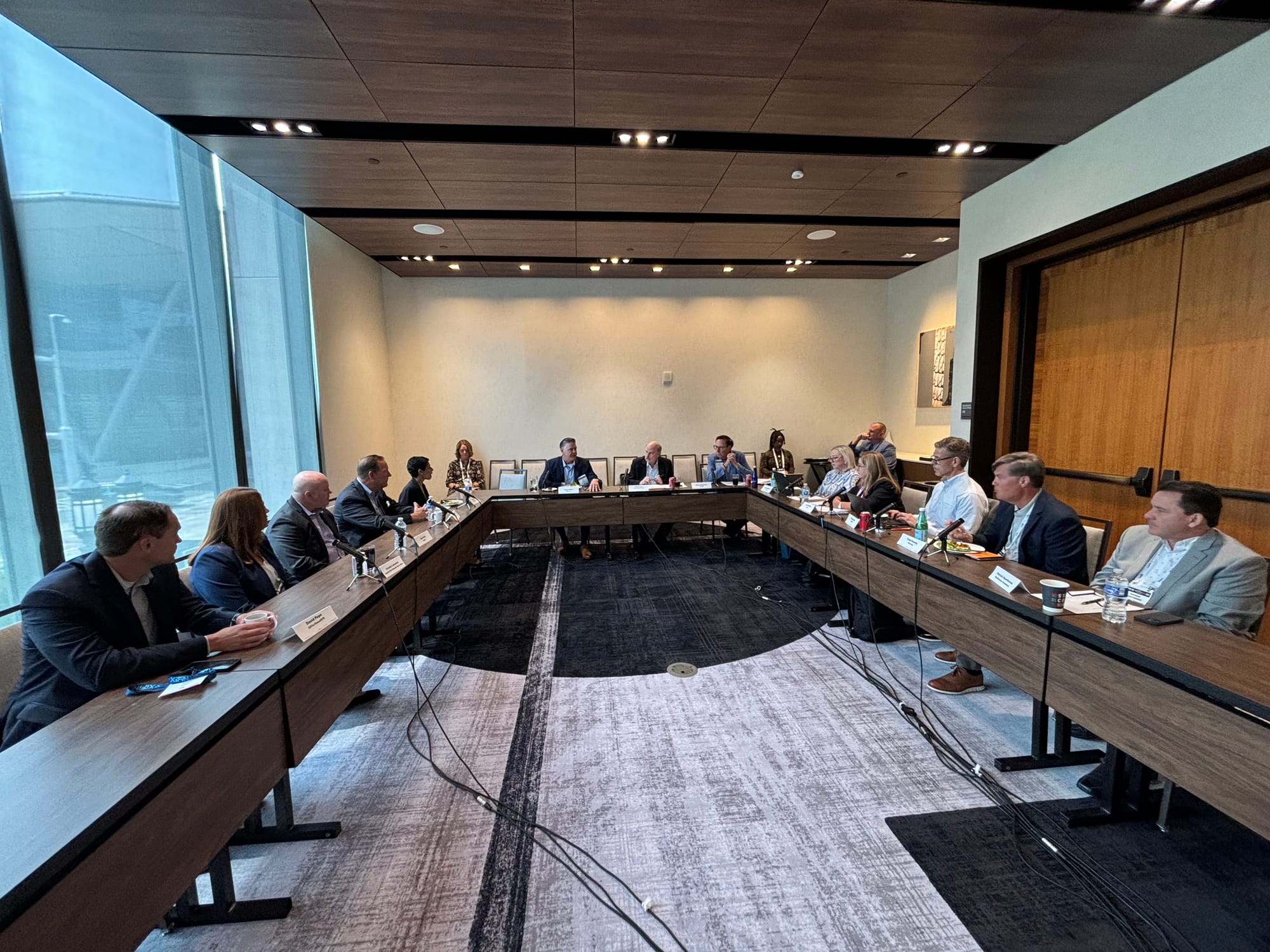
POPE: In order for us to reach this generation, we need to recognize that they’re seeking authenticity. What we are seeing, again, is this resurgence of the younger population truly wanting to engage with a person. Now, when they do that, it has to be an easy experience. We have to make it easy to be a patient seeking care at a pharmacy and easy for a pharmacist providing care at a pharmacy.
It’s not all easy right now. If I come in and I have to give you my medical card and it’s going to be a few minutes and then all of a sudden I’ve got to fill out a patient history form, that can be a challenge, and that’s something that becomes a barrier.
We’ve got some real innovation happening right now in this space from a technology perspective so that when the patient walks in the door, the pharmacist isn’t saying, “Hey, please provide your medical insurance card and complete all these forms.” It’s, “Hey, we were expecting you here for this flu test and I have all the information we need. Let’s roll.” If we can have those tools that make it easy to be a pharmacist providing care and easy to be a patient seeking care, it’s a win-win that will keep patients coming into the store.
ANDERSON: Anecdotally, is the younger generation going to urgent care a lot? That’s what my sense is. They’re not going to call and wait for an appointment.
SHAH: I have a three-year-old and I don’t wait for an appointment. I’ll find out what’s the earliest time that fits with my work schedule. And then go to immediate care. If it was available at the pharmacy, then I’d go to the pharmacy.
SULLIVAN: That’s one of the technologies that we’ve been bringing over from Europe to America, which is 24/7 access tellers within systems. So think of the next generation, who says, “I don’t like talking to people. I want to walk in and scan a barcode, get my stuff and go away. I don’t want to engage with you, as much as we all talk about wanting to.” There are a lot of them who don’t even like to pick up a telephone. So if you’re at 3:00 in the morning and your kid is not healthy and you can get an acute medication with a 24/7 access by scanning a barcode, then you want to be able to do that. Maybe you utilize telepharmacy. Maybe you had a prescription in advance, so all you had to do was scan that barcode. So that’s the kind of flexibility where automation can help make that experience more positive at the retail store too.
STANIFORTH: I do think that we talked about two different things, two different groups of customers and patients. We’re talking about the acute need, which I agree would drive people in no matter what, whether you’re young, old, whatever. If you have pink eye, you need immediate treatment, and you would go. But what we all haven’t talked too much about today, outside of just the chronic illness, is that most of our prescription customers are 55 years old and older. Not all of them have chronic disease, but nevertheless, they may be on prescriptions that require us to take care of them. So there are two dynamics at play here. We still do have to be able to take care of the patients that are the biggest bucket of customers for all of us, without a doubt.
RUSK: It’s kind of what we’re talking about — the idea that food is medicine. It’s getting people healthy, but then keeping them healthy, versus replying to episodic incidents. I wanted to respond to something you said, Steve. I don’t know the exact stat, but people ages 18 to 28 — they’re the largest population that don’t have a primary care physician. Of course, they go right to their cell phone. This is their doctor. Whatever they can find at that moment in time is what they respond to.
ANDERSON: And I think that’s the difference in that data.
HARDING: The future must be intermingled, where consumers can have that immediate convenience access of their phone, or a drug that they just want to receive in the mail. But you can’t take for granted that you live within five miles of a retail pharmacy where you can get emergency care for pink eye or an ear infection because your child is crying all the time. We shouldn’t have a system where we offer convenience to consumers, but it eats away at what is keeping the retail pharmacy on the corner. That’s the underlying problem that we all must solve — how do we create an economic model that gives the best care to the American patient?
WOLDT: Lari, you’re studying pharmacy as a driver of
customer loyalty. Am I correct? Maybe you could tell the group a little bit about that.
HARDING: We surveyed pharmacy consumers and 54% made additional purchases when they were shopping. This is what they say. So we looked at what they say and what they do. Fifty-five percent of them spent more than $25 on the front store and almost a quarter spent more than $50 on the front store when they were coming into the pharmacy. When we looked at what they do, they shop more often, 64% more trips on average, going as high as 135% more trips, and 61% more spend, as high as 213%. So pharmacy is a loyalty driver.
The pharmacy shopper is coming more often, and they’re spending more money. It’s unfortunate that we have to think about it this way in this particular economic environment. But for years, retailers have had products that were loss leaders, where they would put a really low fuel price to get you there and shopping. To some degree, pharmacy is that. Grocery stores certainly have an advantage in this environment where the pharmacy really can be a driver of loyalty.
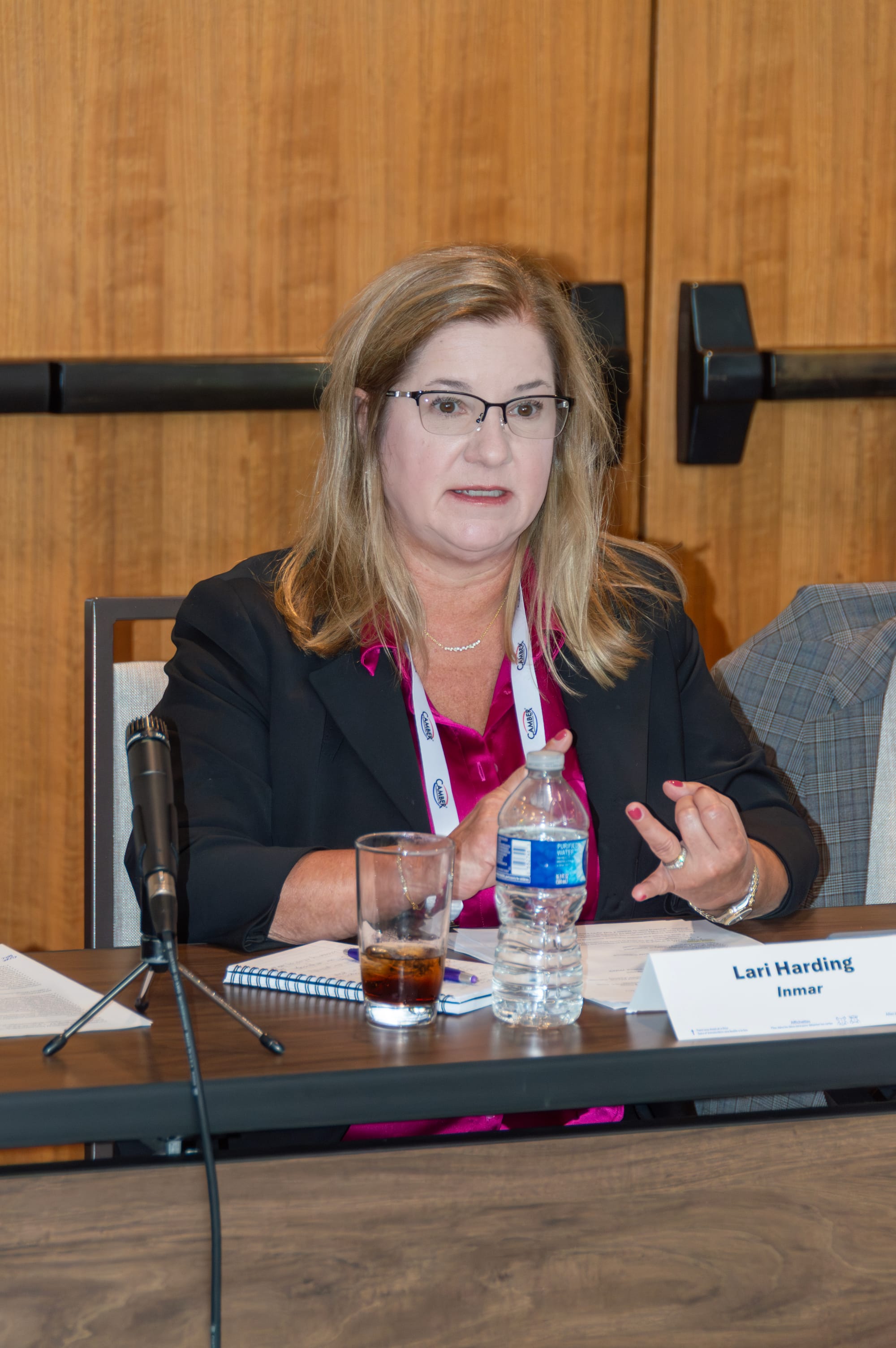
RUSK: Pharmacy is our No. 1 loyalty program, and it would be the case in most grocery chains. Every time we convert a customer who’s a grocery shopper to a pharmacy customer, their total spend for the year goes up significantly.
HUSEBY: It’s not just the pharmacy spend. It’s times three on the other items.
RUSK: That’s separate of the pharmacy spend. If I add in the pharmacy spend, it’s more like times five. This is why it’s so important that we focus our efforts on internal acquisition, because if I could even convert half of the people that walk through our doors to become pharmacy customers, I would solve all my problems.


